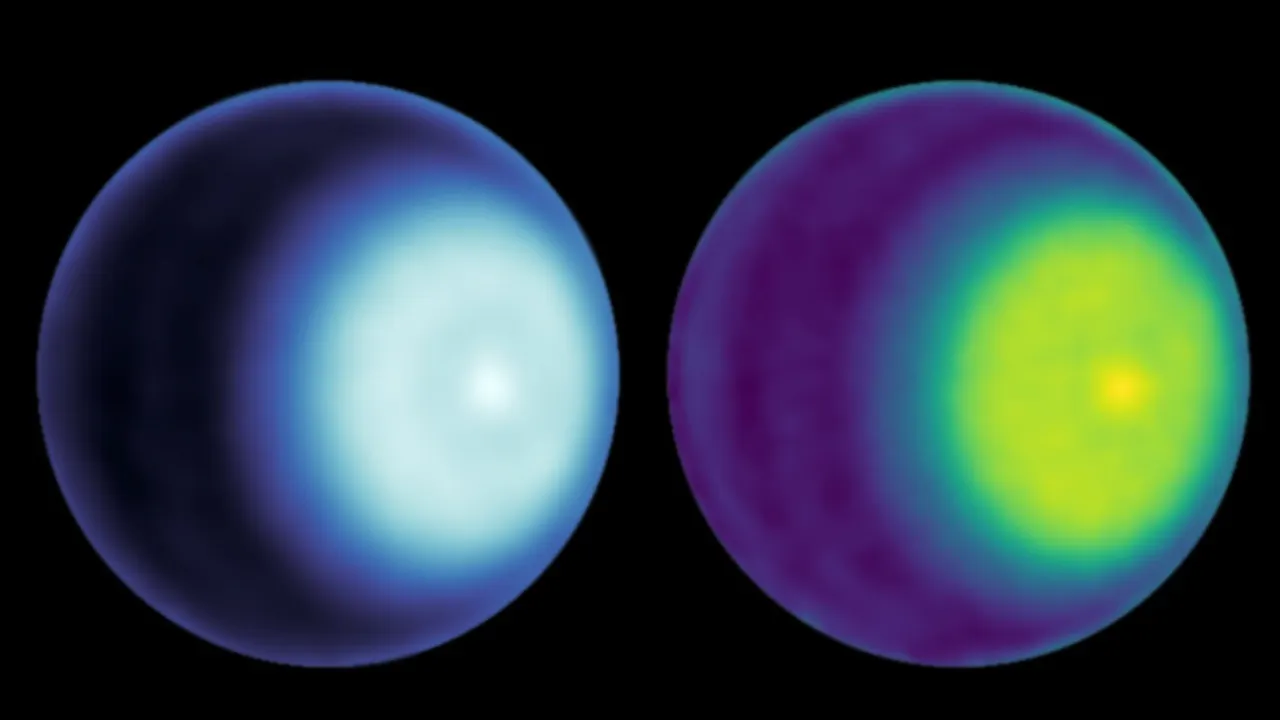
NASA captures a ‘smiling’ sun
NASA shared a video taken by its Solar Dynamic Observatory showing dark patches on the sun, giving the illusion of a smile. (Credit: @NASASun / Twitter)
NASA scientists have found strong evidence of a polar cyclone on Uranus for the first time.
Researchers examined radio waves emitted from the ice giant and detected the phenomenon at its north pole.
NASA said in a release that the findings, published in the journal Geophysical Research Letters, confirm a broad truth.
For all planets with substantial atmospheres in the solar system, whether they are composed of mainly rock or gas, the atmospheres show signs of a vortex at the poles.
NASA’S WEBB SPACE TELESCOPE, CHANDRA TEAM UP FOR STUNNING COMPOSITE IMAGES

NASA scientists used microwave observations to spot the first polar cyclone on Uranus, seen here as a light-colored dot to the right of center in each image of the planet. (Credits: NASA/JPL-Caltech/VLA)
It has long been known that the south pole of Uranus has such a “swirling” feature and imaging from NASA’s Voyager 2 mission showed winds at the polar center spinning faster than over the rest of the pole.
While the spacecraft’s infrared measurements showed no temperature chances, the new study does.
They reached these conclusions by using radio antenna dishes from New Mexico’s Very Large Array, finding that the air and the north pole seems to be warmer and drier – much like cyclones spotted by NASA’s Cassini spacecraft at Saturn.
The agency said those are hallmarks of a strong cyclone.

The images use wavelength bands K, Ka and Q. To highlight cyclone features, a different color map was used for each. (Credits: NASA/JPL-Caltech/VLA)
NASA’S WEBB SPACE TELESCOPE FINDS WATER AROUND MYSTERIOUS MAIN BELT COMET
“These observations tell us a lot more about the story of Uranus. It’s a much more dynamic world than you might think,” lead author Alex Akins, of NASA’s Jet Propulsion Laboratory, said in a statement. “It isn’t just a plain blue ball of gas. There’s a lot happening under the hood.”
The observations were collected in 2015, 2021 and last year, and went deeper into the planet’s atmosphere than any previous observations.

This image of Uranus was taken by NASA’s Voyager 2 spacecraft in 1986. (Credits: NASA/JPL-Caltech/VLA)
CLICK HERE TO GET THE FOX NEWS APP
NASA said that the position of Uranus in its long orbit around the sun has helped to get a better view.
For the last few decades, the poles hadn’t been turned toward Earth.
With the new findings, cyclones or anti-cyclones have been identified at the poles on every planet in the solar system but Mercury. Mercury has no substantial atmosphere.







